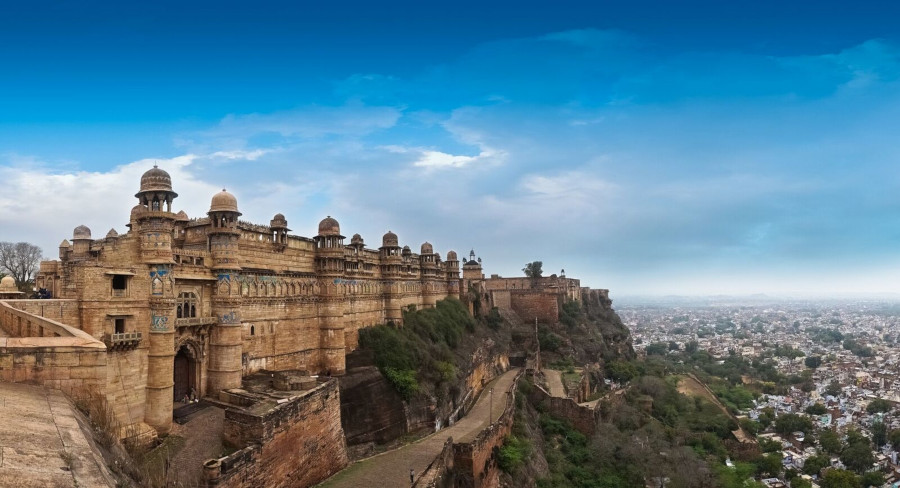आ समुद्रात् तु वै पूर्वादा समुद्राच्च पश्चिमात् । तयोरेवान्तरं गिर्योरार्यावर्तं विदुर्बुधाः
“The country extending as far as the Eastern Ocean and as far as the Western Ocean, and lying between the two mountains (Himalaya and Vindhya),—the learned know as Āryāvrata”
Back in the Vedic and even Epic period the term “Madhya Desha” referred not to the area that constitutes Madhya Pradesh today, but to the Ganga – Yamuna Doab – the great plains of present UP and Bihar. The Vindhya territory marked the southern frontier of the Aryan cultural zone.
Ancient texts and manuscripts mention the existence of many towns and cities of existing Madhya Pradesh.
The eminent grammarian of the 4th century BC, Panini mentions the Avanti Janapada in central India.
Medieval history of Madhya Pradesh can be categorized into three different periods :
- The Nanda Empire
- The Maurya Empire
- The Gupta Empire
This period also witnessed the uprising of the mighty Rajpur clans which included the Paramara’s and Chandela’s, the latter credited for the magnificient Khajuraho Temples.
In the western part, the Malwa Sultanate ruled over the area.
The Mughals and Marathas also influenced the history of Madhya Pradesh largely along with the Britishers in the later phase.
The Muslims came into Central India in the beginning of 11th century. First of all, Mahmud of Ghazni came over here and then Mohammad Gouri, who incorporated some parts of Central India into his ruling territory of Delhi. Central India was also part of the Mughal empire.
Madhya Pradesh has witnessed far less iconoclasm over centuries compared to rest of the country. Many of the ancient pre-Islamic sites in North India (pre 12th century) are to be found here.
- Khajuraho
- Bateshwar temples
- Temples at Amarkantak
- Sanchi Stupa
- Sonagiri Jain temples
Queen Ahilyabai Holkar of Indore, the Gond Maharani Kamalapti and Queen Durgawati, etc., were women rulers whose names have left an indelible imprint on Indian history for their excellent leadership and contributed during their rule.
In the year 2000, Chattisgarh was carved out of Madhya Pardseh as a separate entity state.

